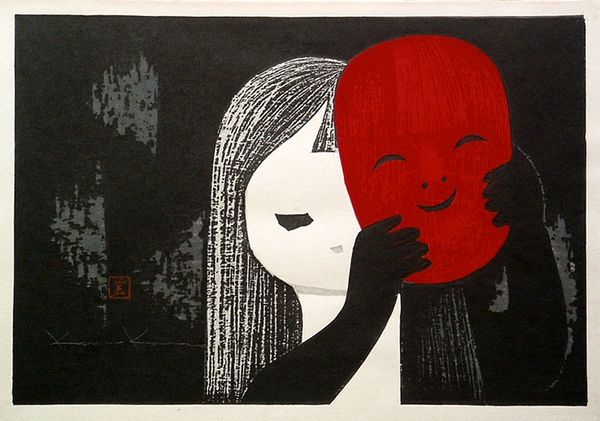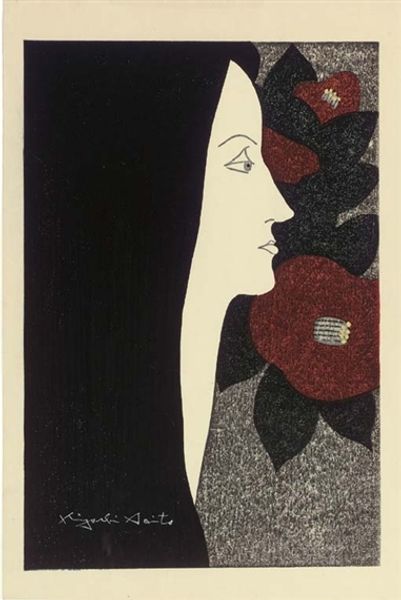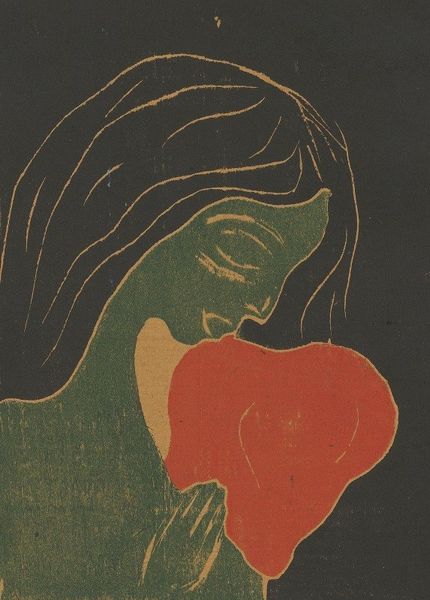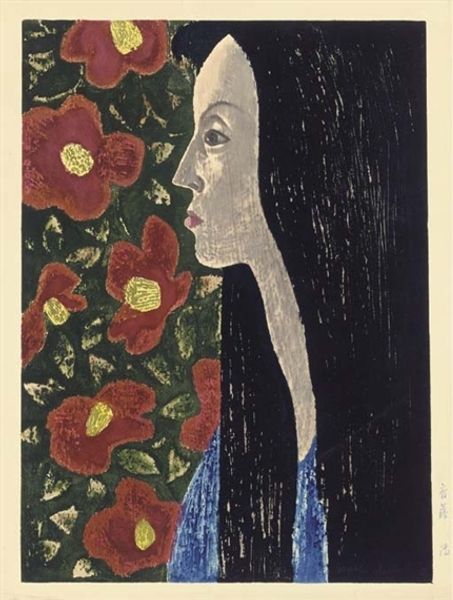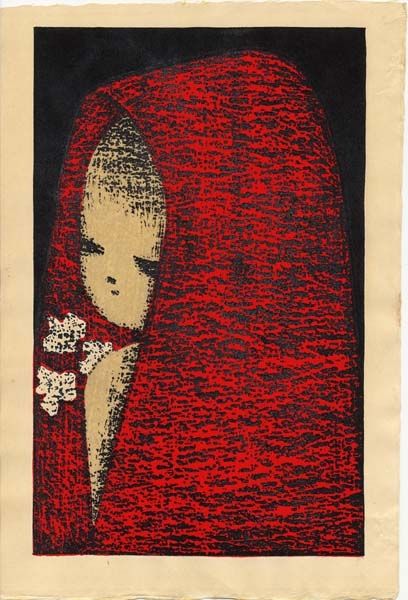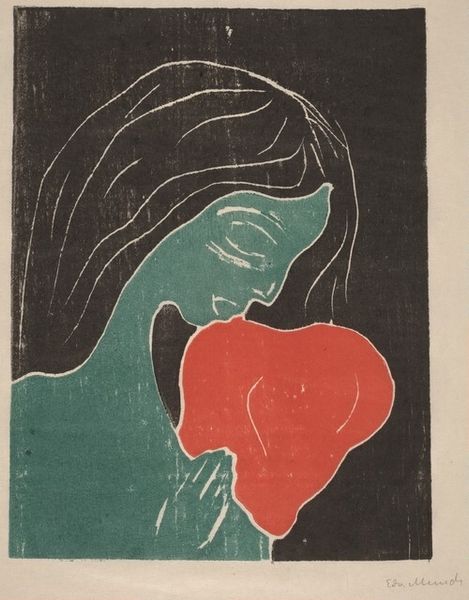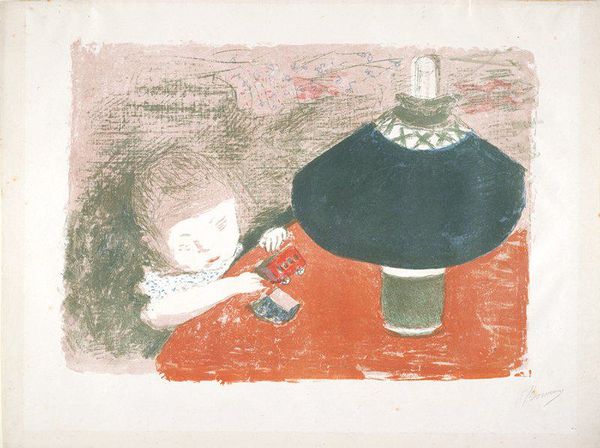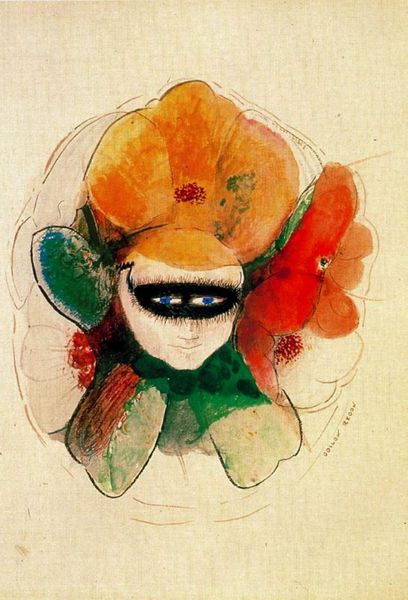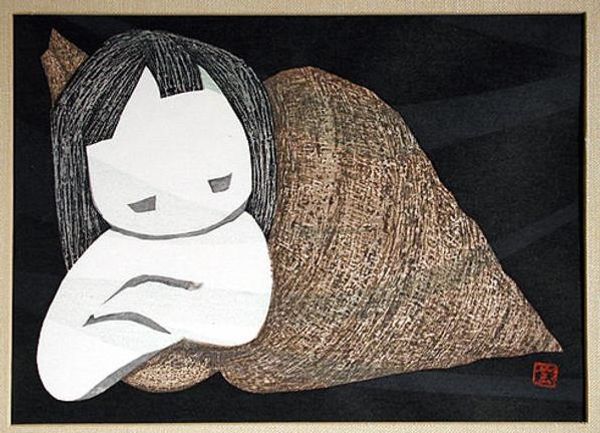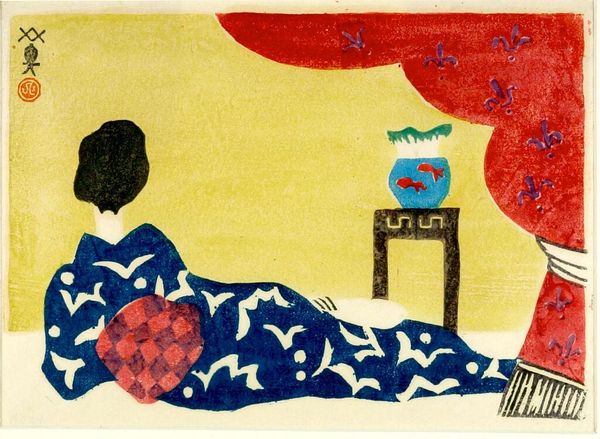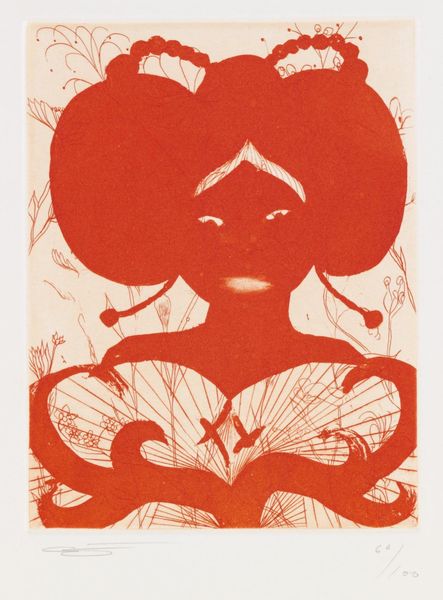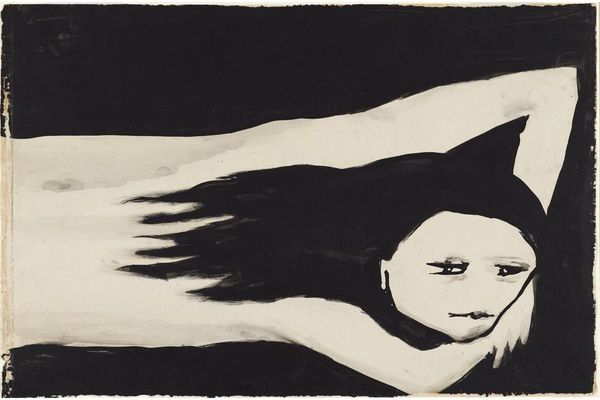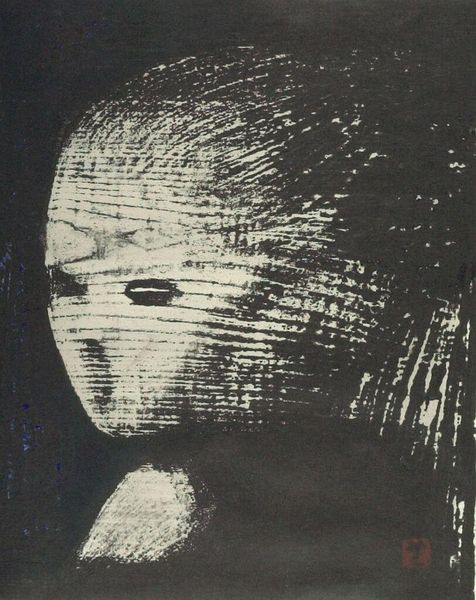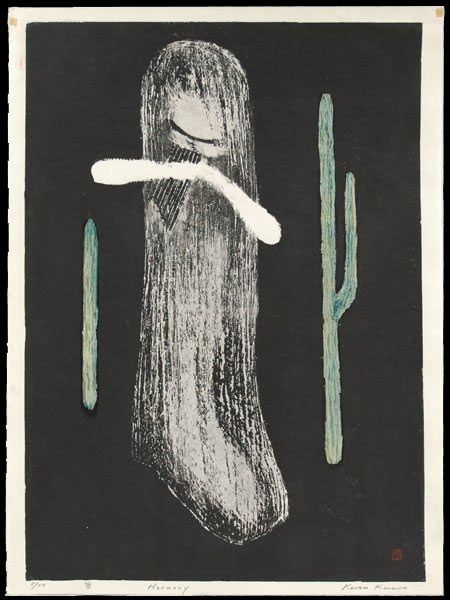
Copyright: Public domain Japan
Editor: Kaoru Kawano’s “Child and Flower,” a woodblock print from 1950. There’s something incredibly haunting and tender about it. The bold red flower dominates the frame, almost engulfing the child. What story do you think this work is trying to tell? Curator: It feels like a whispered secret, doesn't it? Kawano often explored themes of innocence and the often-bittersweet transition into adulthood. I see the flower, that almost overwhelmingly vibrant red, as representing the intensity and perhaps even the potential dangers of the world. The child's muted palette and averted gaze… It speaks to a vulnerability, a certain reticence. Do you get a sense that the flower is comforting or overwhelming? Editor: I'm torn. The color is inviting, but its size is a little scary, like the flower could just swallow the child. Curator: Exactly! Think of traditional Japanese aesthetics, the concept of "mono no aware"—the pathos of things, a gentle sadness inherent in beauty. This work, to me, embodies that feeling. The child's connection to the flower isn't simply joyous; there’s an undercurrent of something more complex, a fleeting moment captured in time. And it also ties in nicely with the post-impressionist style, highlighting an emotional impression above realism. What a contrast to happy family portraits by someone like Renoir! Editor: So it’s not just a picture of a kid and a flower. It’s about… impermanence? Curator: In a way, yes. It is a moment in a bigger story that explores youth, the beauty of nature, but tinged with knowing. What will come of this moment, for this child? What future is coming? Editor: I definitely see that complexity now. I’ll look at woodblock prints differently from now on, especially in relation to other styles from the same period! Curator: Wonderful! Each work is a world of stories waiting to unfold.
Comments
No comments
Be the first to comment and join the conversation on the ultimate creative platform.
